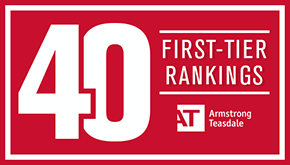Why the Final CMS Rule Could Have Been Worse
Long-term care providers and organizations involved with post-acute care will find a lot to dislike in the 713-page final rule released by the Centers for Medicare & Medicaid Services (CMS) on September 28, 2016. The final rule, which applies to long-term care facilities that participate in Medicare and/or Medicaid, establishes many new requirements that will increase the cost and paperwork involved in providing care.
While it’s small comfort, the final rule could have been worse. Based on issues raised in many of the almost 10,000 comments CMS received on the proposed rule, CMS dropped or modified a handful of problematic proposals. CMS also resisted calls from some commenters to impose even more burdensome requirements. Issues of note include:
- Hospital transfers – The proposed rule would have required an in-person screening by a physician, physician assistant or nurse practitioner prior to any unscheduled non-emergency transfers of residents to a hospital. Commenters had raised concerns about the existing problems with access to such practitioners and the impact the proposed rule would have on efforts to recruit qualified practitioners to serve residents in facilities. CMS discussed its ongoing efforts to reduce avoidable hospitalizations and determined that it would not “finalize this requirement at this time.”
- Physician credentialing – CMS had proposed requiring facilities to have a “professional credentialing” process for physicians caring for residents. After hearing from multiple commenters who questioned how this would be interpreted and raised concerns about consequent delays in obtaining services from the resident-selected physician, CMS withdrew the proposed requirement.
- Open visitation – “Immediate access to a resident” would have been required under the proposed rule for anyone visiting with the resident’s consent, “subject to reasonable clinical and safety restrictions.” Numerous comments raised safety-related concerns and discussed visitor behaviors that pose a risk to the well-being of residents. CMS did not withdraw the proposal, but added a provision requiring facilities to have visitation policies and procedures setting out reasonable restrictions based on clinical or safety concerns (42 CFR §483.10(f)(v)). Acceptable safety restrictions mentioned by CMS include locking the facility at night, requiring visitors to make prior arrangements for late night access, and denying access to visitors who have been found to have abused, exploited or coerced a resident or who are inebriated and disruptive.
- Staffing – CMS reported that “many commenters” requested that it establish and require minimum staffing levels as well as require 24/7 registered nurse (RN) staffing. CMS declined to do so, saying it did not agree that a “‘one size fits all’ approach is best.” CMS also expressed concern that RN supply might make such a mandate “particularly challenging” in some markets. CMS did say that it would consider one commenter’s recommendation to examine whether the current “five-star” rating system methodology could potentially be adapted to establish presumptive levels.
Even with the changes outlined above, the final rule poses many challenges for long-term care providers and organizations involved with post-acute care. Armstrong Teasdale lawyers can assist clients with determining how they will be individually affected by the final rule and developing strategies to address the changes.
To read the rule in its entirety, click here.






































